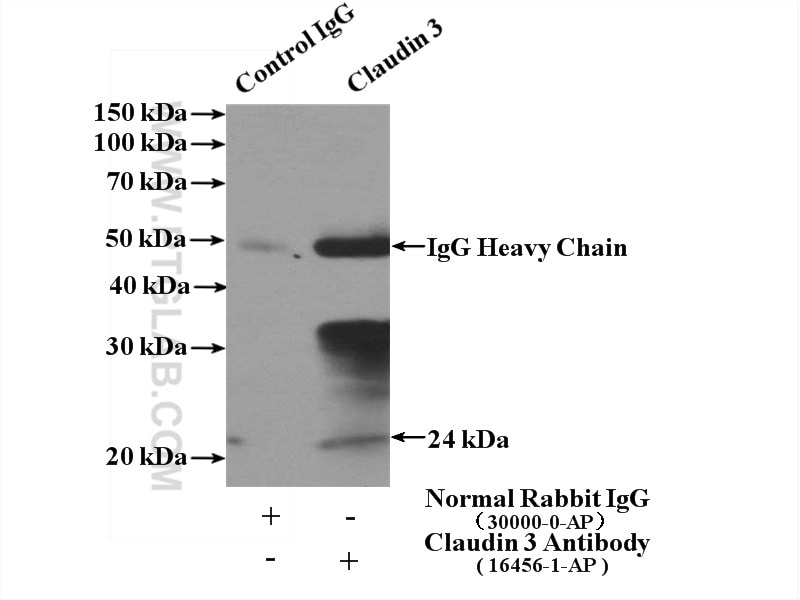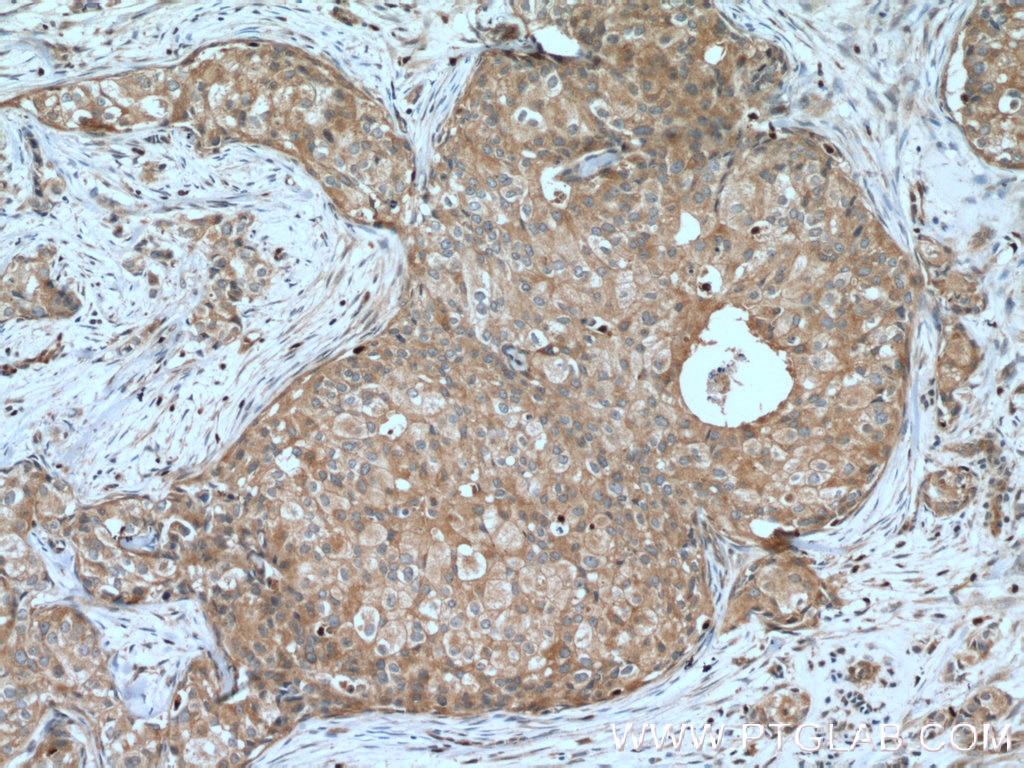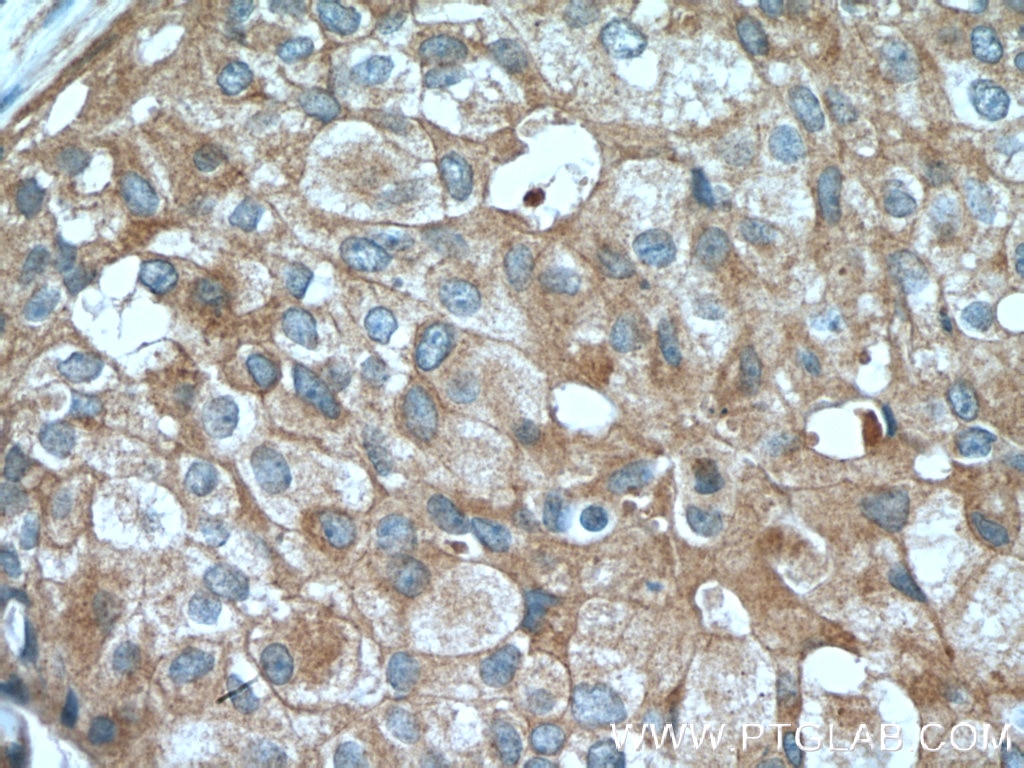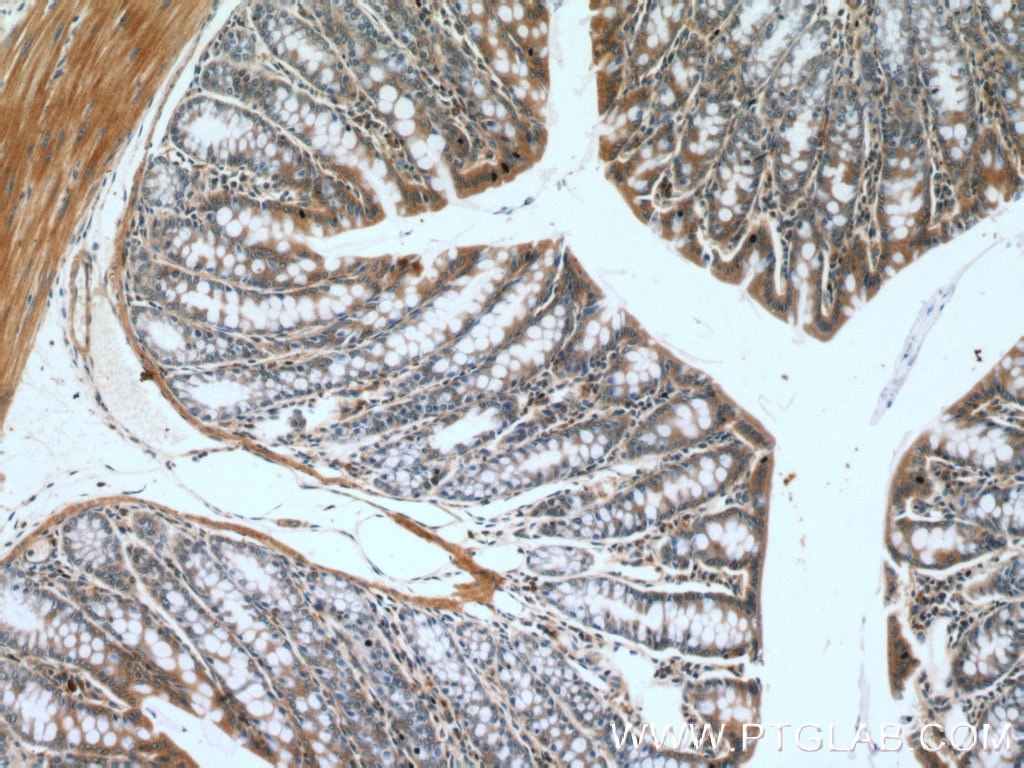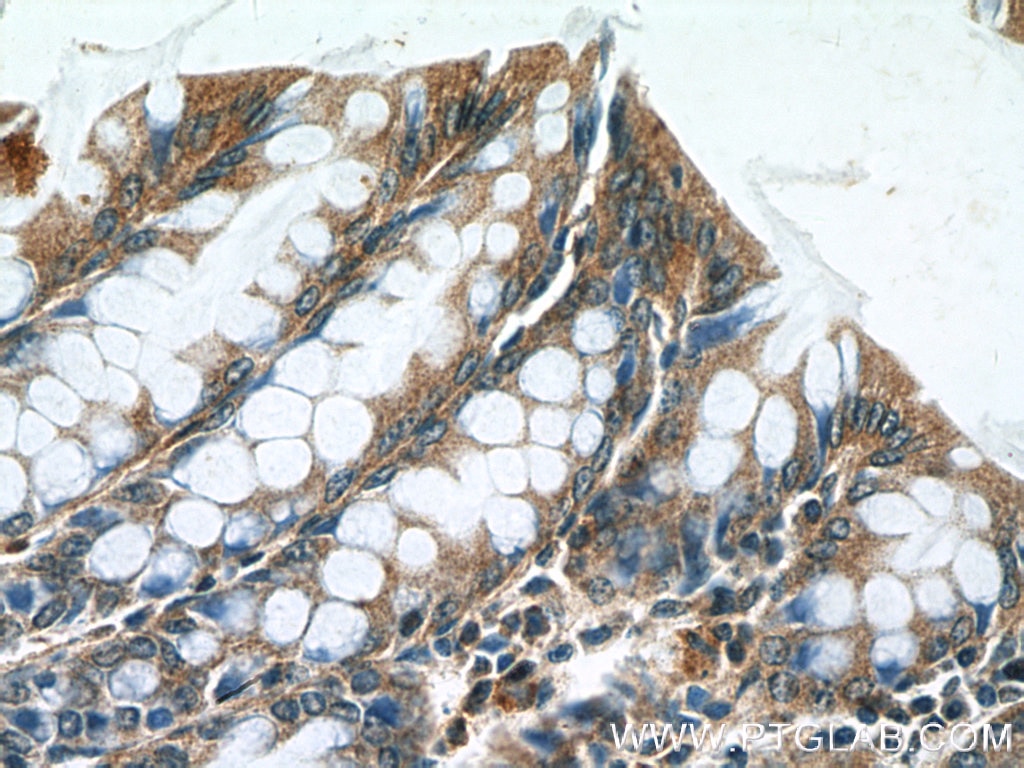Claudin 3 Polyklonaler Antikörper
Claudin 3 Polyklonal Antikörper für IP, IHC, ELISA
Wirt / Isotyp
Kaninchen / IgG
Getestete Reaktivität
human, Maus, Ratte und mehr (1)
Anwendung
IHC, IF, IP, ELISA
Konjugation
Unkonjugiert
Kat-Nr. : 16456-1-AP
Synonyme
Geprüfte Anwendungen
| Erfolgreiche IP | Maus-Dickdarmgewebe |
| Erfolgreiche Detektion in IHC | humanes Mammakarzinomgewebe, Maus-Kolongewebe Hinweis: Antigendemaskierung mit TE-Puffer pH 9,0 empfohlen. (*) Wahlweise kann die Antigendemaskierung auch mit Citratpuffer pH 6,0 erfolgen. |
Empfohlene Verdünnung
| Anwendung | Verdünnung |
|---|---|
| Immunpräzipitation (IP) | IP : 0.5-4.0 ug for 1.0-3.0 mg of total protein lysate |
| Immunhistochemie (IHC) | IHC : 1:50-1:500 |
| It is recommended that this reagent should be titrated in each testing system to obtain optimal results. | |
| Sample-dependent, check data in validation data gallery | |
Veröffentlichte Anwendungen
| IHC | See 13 publications below |
| IF | See 15 publications below |
Produktinformation
16456-1-AP bindet in IHC, IF, IP, ELISA Claudin 3 und zeigt Reaktivität mit human, Maus, Ratten
| Getestete Reaktivität | human, Maus, Ratte |
| In Publikationen genannte Reaktivität | human, Hausschwein, Maus, Ratte |
| Wirt / Isotyp | Kaninchen / IgG |
| Klonalität | Polyklonal |
| Typ | Antikörper |
| Immunogen | Claudin 3 fusion protein Ag9411 |
| Vollständiger Name | claudin 3 |
| Berechnetes Molekulargewicht | 220 aa, 23 kDa |
| Beobachtetes Molekulargewicht | 20-24 kDa |
| GenBank-Zugangsnummer | BC016056 |
| Gene symbol | Claudin 3 |
| Gene ID (NCBI) | 1365 |
| Konjugation | Unkonjugiert |
| Form | Liquid |
| Reinigungsmethode | Antigen-Affinitätsreinigung |
| Lagerungspuffer | PBS with 0.02% sodium azide and 50% glycerol |
| Lagerungsbedingungen | Bei -20°C lagern. Nach dem Versand ein Jahr lang stabil Aliquotieren ist bei -20oC Lagerung nicht notwendig. 20ul Größen enthalten 0,1% BSA. |
Hintergrundinformationen
Claudins are a family of proteins that are the most important components of the tight junctions, where they establish the paracellular barrier that controls the flow of molecules in the intercellular space between the cells of an epithelium. 23 claudins have been identified. They are small (20-27 kilodalton (kDa)) proteins with very similar structure. They have four transmembrane domains, with the N-terminus and the C-terminus in the cytoplasm.
Protokolle
| PRODUKTSPEZIFISCHE PROTOKOLLE | |
|---|---|
| IHC protocol for Claudin 3 antibody 16456-1-AP | Protokoll herunterladenl |
| IP protocol for Claudin 3 antibody 16456-1-AP | Protokoll herunterladen |
| STANDARD-PROTOKOLLE | |
|---|---|
| Klicken Sie hier, um unsere Standardprotokolle anzuzeigen |
Publikationen
| Species | Application | Title |
|---|---|---|
J Hazard Mater Insight into perfluorooctanoic acid-induced impairment of mouse embryo implantation via single-cell RNA-seq | ||
Aging Cell Advanced maternal age causes premature placental senescence and malformation via dysregulated α-Klotho expression in trophoblasts. | ||
EMBO Mol Med Deficiency in intestinal epithelial O-GlcNAcylation predisposes to gut inflammation. | ||
Sci China Life Sci Longitudinal gut fungal alterations and potential fungal biomarkers for the progression of primary liver disease | ||
J Hazard Mater Dual effects of JNK activation in blood-milk barrier damage induced by zinc oxide nanoparticles. | ||
Environ Int Translocation of transition metal oxide nanoparticles to breast milk and offspring: The necessity of bridging mother-offspring-integration toxicological assessments. |
Rezensionen
The reviews below have been submitted by verified Proteintech customers who received an incentive for providing their feedback.
FH Priya (Verified Customer) (07-31-2023) | Used for Caco2 cells and mice tissue
|
FH Priya (Verified Customer) (06-21-2023) | Used this antibody for Caco2 cells andmice tissue
|
